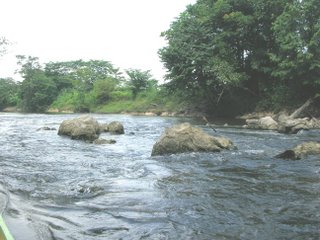
They aren’t easy to write. They rely in large part on language facility and tricks in wording. In best answer questions, several answers will be right but only one is the best possible answer. We have just completed the orals for the end of the community medicine rotation in fourth year. It has been  an exercise about the crucial importance of simple phrasing and clear language without which the students don’t even understand the question. l am attempting to write simple, clear MCQs with varying results. I am getting more and more agitated as I try to match my original objectives up with questions that focus almost entirely on knowledge of facts. My colleagues, who have exactly the same kind of problem, make soothing gentle reassurances many of which end in lah. The lah is also extended to the English translation.
an exercise about the crucial importance of simple phrasing and clear language without which the students don’t even understand the question. l am attempting to write simple, clear MCQs with varying results. I am getting more and more agitated as I try to match my original objectives up with questions that focus almost entirely on knowledge of facts. My colleagues, who have exactly the same kind of problem, make soothing gentle reassurances many of which end in lah. The lah is also extended to the English translation.
“It’s OK, lah. Don’t worry, lah.”
”Lah-ing” is a wonderful softening device if ever there was one, so Malaysian. Malaysians are a gentle, kind people. Even when you are annoyed with them, you are deflected by their innate kindness. Proverbs often extract the essence of cultures.
One can pay back the loan of gold but one is forever in debt to those who are kind.
Malay Proverb
Our MPH students come over for a Burmese Laksa lunch which is similar to but not the same as Penang Laksa. The Burmese require the thick shrimp and fish sauce to have exactly the right amount of lemon grass, so much tasting goes into getting it just right. The fish-shrimp sauce is ladled over different types of noodles with hard-boiled eggs, fried garlic, deep fried dahl paste, a dollop of hot pepper, chopped cucumbers and coriander on the side and lime juice squeezed on top.

It is also durian time so we are treated to Indonesian durian, not quite so good as Sarawak durian as I am told repeatedly. Three large spiked fruits are cracked open on the table and we help ourselves to the fleshy, succulent fruit. A treat someone’s father has brought back from his trip to locate enough durian to pickle.
The students present me with a Iban beaded top that circles my neck and extended over the whole upper body in cascades of bright triangles of design. I greatly admire the traditional Iban costumes seen mostly in dancers, which flow sedately from side to side emphasizing their hand and leg movements but until I put this beaded top on, was unaware of the kinesthetic experience of wearing one. The beads are heavier than they look and feel like a sustained hug that shimmers when you move. It makes you feel enclosed and protected as well as out there dazzling the world. What an amazing feeling and delightful surprise. This is of course the way with costumes of all sorts. You really do feel as well as look different in them, but the Iban have managed to distill an experience in this beaded dancing top.

One last task is to attend the student presentations of the community placement elective. They have worked hard and incorporated our previous comments. The written report is superb. They answer our questions well. Their analysis is detailed and their intervention was creative. The PowerPoint presentation is a tad lengthy with something like 125 slides. Afterwards they crowd around excitedly to show us their video of the placements. A group of them have, in addition to everything else, done a 10 minute movie of the whole placement from the community visits, setting up their rooms and bed nets, interviewing villagers, home visiting and the health education sessions. The video is professional and slick with fades, background music and stunning photography. It would make a good advertisement for the medical school’s community based programs. We tell them they should put it on You-Tube and show it to the dean. They are shy but pleased. The video better captures the richness of the community program and the connection students have established with the village than any exams will ever do. The Malaysians were right, one shouldn’t worry about MCQs.
 Moof has tagged me to give 7 songs I am listening to now. This is easy as I am motoring across Canada, visiting friends and relatives enroute, a 3000 kilometer trajectory that coincides with the honking Vs of Canadian geese overhead and every kind of duck you can think of in the ponds and shelter belts of the migratory pathways that sweep up across the Canadian prairies.
Moof has tagged me to give 7 songs I am listening to now. This is easy as I am motoring across Canada, visiting friends and relatives enroute, a 3000 kilometer trajectory that coincides with the honking Vs of Canadian geese overhead and every kind of duck you can think of in the ponds and shelter belts of the migratory pathways that sweep up across the Canadian prairies. 




























